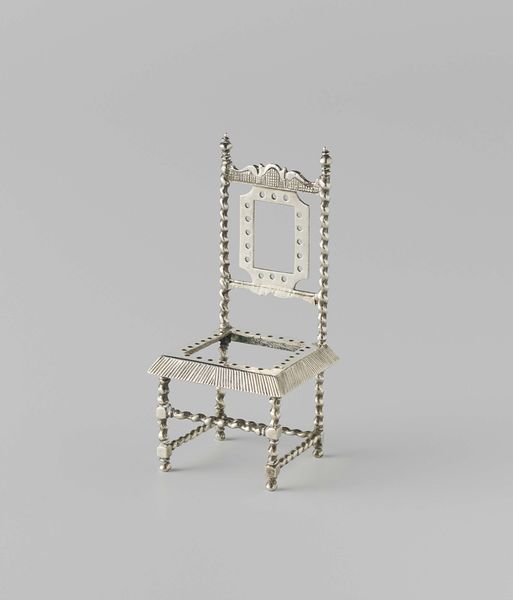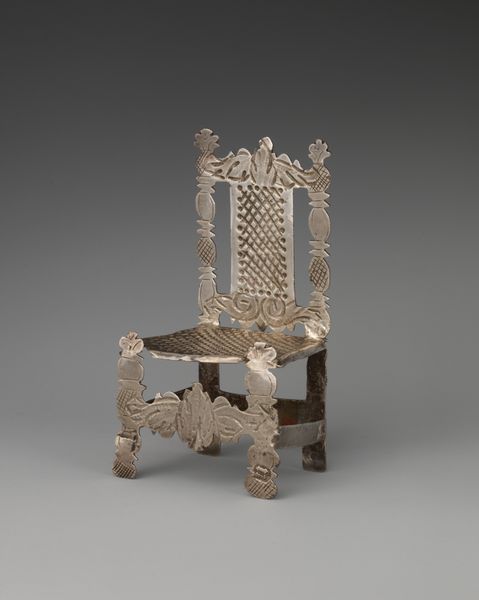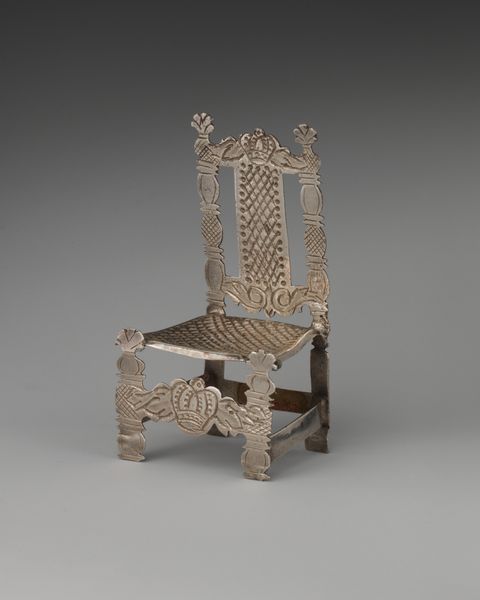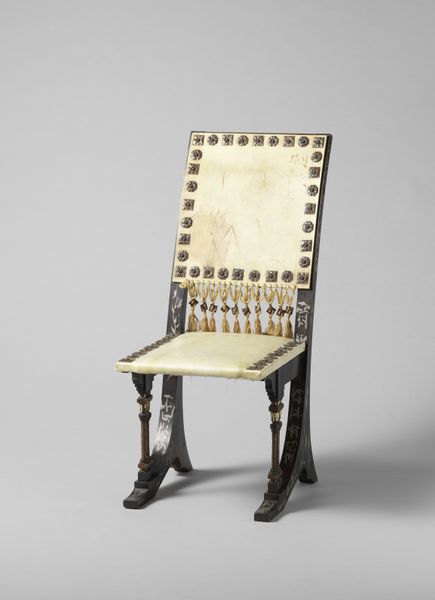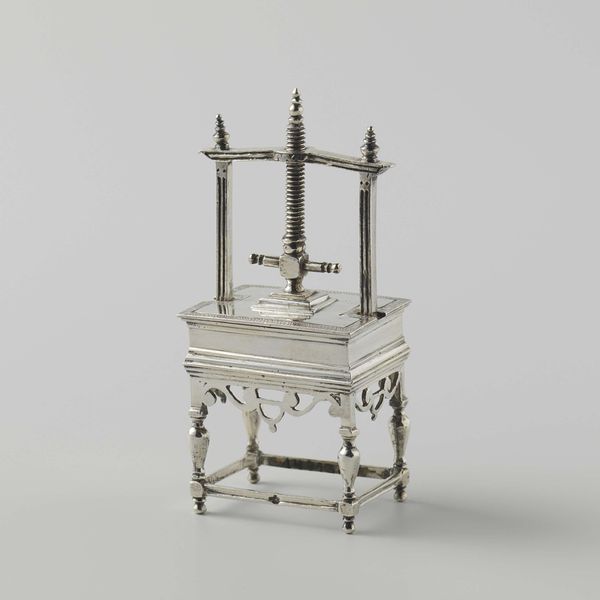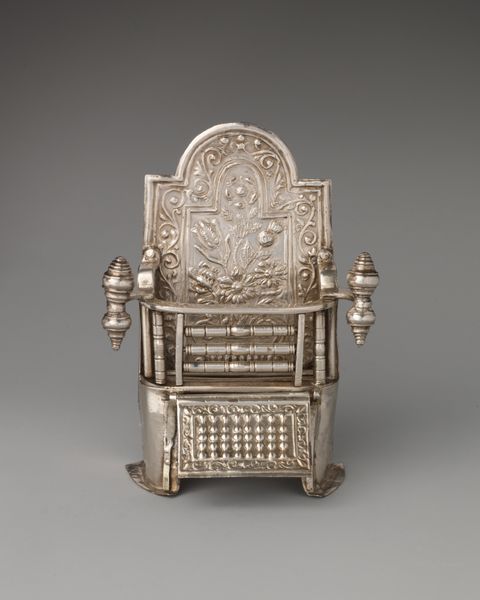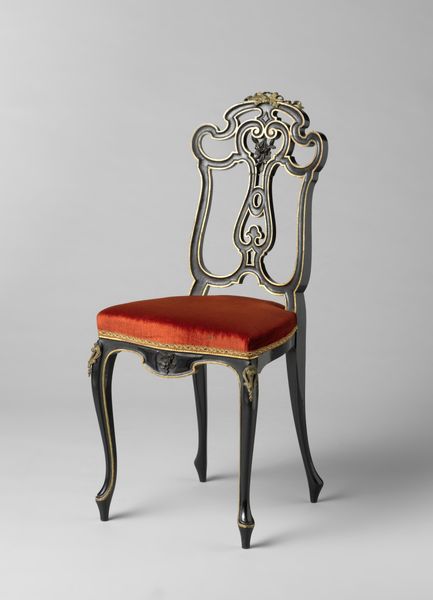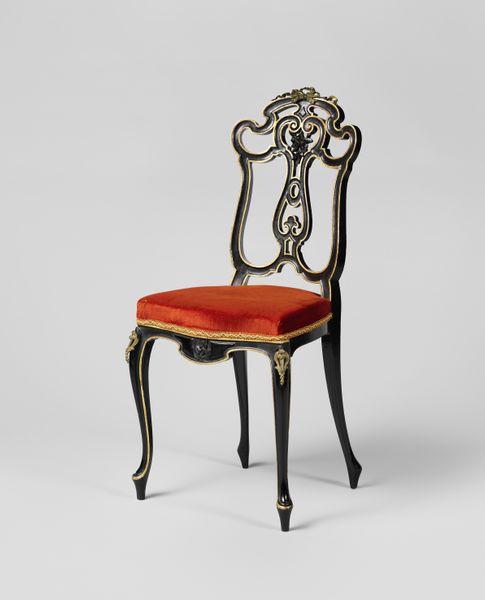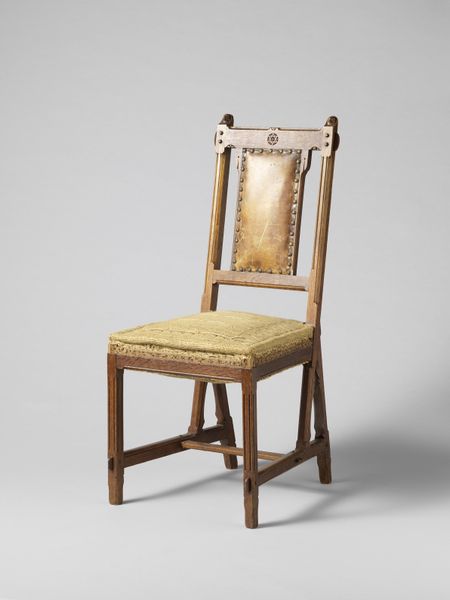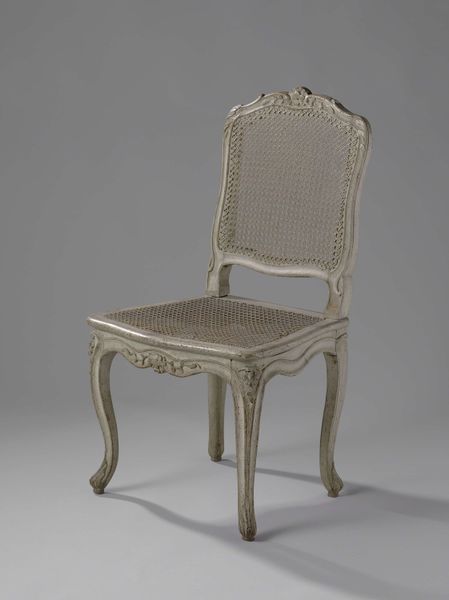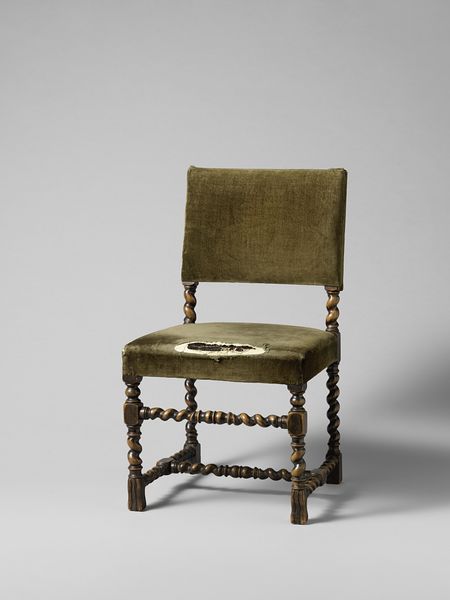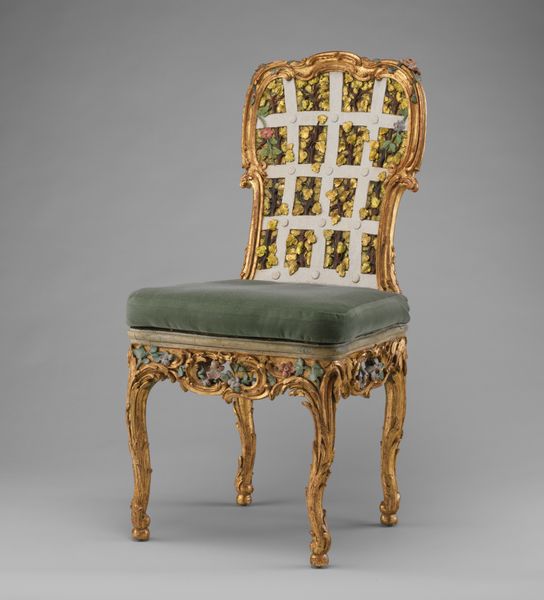
silver, metal, sculpture
#
silver
#
baroque
#
metal
#
sculpture
#
decorative-art
Dimensions: 3 1/8 × 1 1/4 × 1 1/4 in. (7.9 × 3.2 × 3.2 cm)
Copyright: Public Domain
Curator: Well, isn't that something. I find myself strangely drawn to the stillness and silvery sheen of this tiny chair. It almost feels… melancholy. Editor: Indeed! We are looking at a “Miniature side chair,” created between 1685 and 1715. It is currently held at the Metropolitan Museum of Art. Crafted from silver, it is a striking example of Baroque decorative art. Curator: Baroque, absolutely. All that ornate detail meticulously wrought in silver. I am so curious about the labor behind such an object. The scale challenges our perception of functional design, forcing us to consider it less as furniture and more as sculpture, really highlighting craft over utilitarian function. Editor: Right. I'm immediately drawn to considering its potential symbolic value. What does it mean to shrink an object so tied to notions of status and power? Whose scale are we using when we designate something as miniature, and why? Does it function as some wry commentary on hierarchy? Is it poking fun at someone or something specific? Curator: Or, perhaps, and I can't help but imagine, that its creation involved intense specialisation. Consider the silversmith’s meticulous work: the chasing, the engraving—the intense material investment into an object of limited use-value. That makes it fascinating. Was it a showpiece, perhaps intended to demonstrate skill and affluence, circulating as a material marker within networks of patronage? Editor: It could be either, or both! The very preciousness of the metal begs consideration, given silver's link to colonial exploitation and extraction. Did the resources and labor for this decorative piece rely on unequal power dynamics, perhaps even enabling exploitation in the colonies? The sheen of silver belies very complicated origins. Curator: Absolutely, there are so many ways into an artwork like this! On one level it represents the master craftsman's deep understanding of materiality: silver transformed into something more. Editor: I think so too, and maybe understanding what drove such intense focus can remind us of what still drives exploitation today. I'm definitely walking away seeing our gilded present in that tiny chair.
Comments
No comments
Be the first to comment and join the conversation on the ultimate creative platform.
